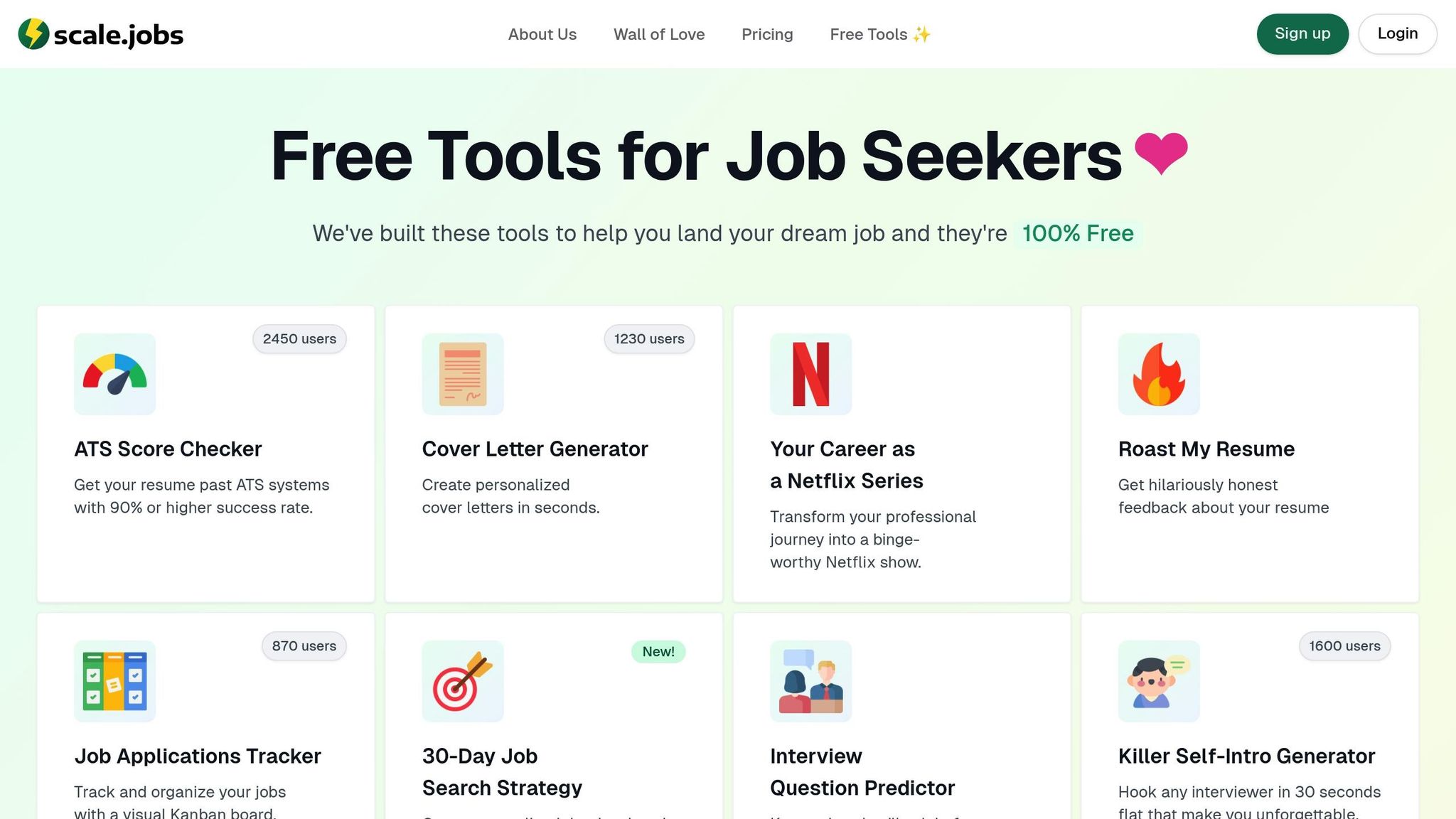How To Write Case Studies For Job Portfolios
Learn how to create impactful case studies for your job portfolio, showcasing skills, measurable results, and professional growth.

Case studies are a simple yet powerful way to showcase your skills and achievements in job portfolios. Here’s how to create them effectively:
- Start with Results: Highlight measurable outcomes like increased revenue, reduced costs, or improved efficiency.
- Define the Problem: Clearly explain the challenge you faced, using specific metrics if possible.
- Show Your Approach: Outline the steps you took, simplifying technical details for clarity.
- Focus on Impact: Use data to demonstrate how your work made a difference.
- Tailor by Role: Align your case studies with the job you're targeting (e.g., developers focus on code performance, marketers on campaign ROI).
Quick Example
"Reduced processing time by 75% by optimizing data pipelines, saving the company $50,000 annually."
Use visuals like charts or timelines to make your achievements stand out. Tools like portfolio generators and ATS checkers can help polish your presentation. Ready to start? Pick your best project and follow these steps.
Writing Your Case Study: 5 Key Steps
2. Problem Statement
In step 2 of your case study, clearly define the main challenge or objective in a single sentence. Whenever possible, include measurable details to highlight the scale of the issue. Follow this by explaining the specific methods or strategies you applied to address the problem.
How to write a UX Design case study | Real example & Template
Writing Clear and Effective Stories
Once you've wrapped up your problem statement and methods, it's time to craft a story that highlights the impact of your work.
Opening with Key Results
Start with a measurable achievement that grabs attention. For instance, if you introduced a new customer service protocol, lead with something like: "Cut customer response time by 45% while keeping a 98% satisfaction rate." This is far more engaging than diving straight into technical details.
Making Technical Content Clear
When explaining your methods, make sure your audience - whether experts or non-experts - can follow along. Simplify complex ideas without losing accuracy. Analogies and visual aids can help clarify intricate processes.
Ways to Improve Clarity:
- Define technical terms the first time you use them.
- Replace jargon with plain language whenever possible.
- Use specific examples to explain abstract ideas.
- Break lengthy explanations into smaller, easier-to-read sections.
For example, instead of saying, "Implemented asynchronous processing architecture", try: "Built a system for concurrent processing, reducing processing time by 60%."
Focusing on Results
Your story should revolve around results, using technical details to support them. Data from scale.jobs shows that 93% of job seekers who highlight measurable achievements in their portfolio case studies secure full-time roles within three months.
How to Present Results Effectively:
| Result Type | Example Format | Impact Focus |
|---|---|---|
| Quantitative | "Increased revenue by $50,000" | Highlights financial gains |
| Efficiency | "Reduced process time by 75%" | Demonstrates operational improvements |
| Quality | "Achieved 99.9% uptime" | Emphasizes reliability |
| Scale | "Expanded user base to 10,000+" | Showcases growth |
Highlighting Professional Skills
Matching Projects to Job Goals
Pick projects that align closely with the role you're targeting. Highlight experiences that demonstrate relevant technical know-how and interpersonal abilities. Focus on projects where you've tackled industry challenges, led teams, collaborated effectively, or delivered measurable results. Use specific examples to back up your claims and show the impact of your work.
Demonstrating Skills with Examples
When sharing your experience, combine technical and interpersonal skills with clear, measurable outcomes.
| Skill Type | Example Task | Measurable Outcome |
|---|---|---|
| Technical | Optimized React.js frontend | Improved page load time by 40% |
| Leadership | Managed a team of eight across teams | Completed project 2 weeks early |
| Problem-Solving | Fixed a bottleneck in data pipelines | Cut processing time by 75% |
| Communication | Developed stakeholder documentation | Reduced support tickets by 90% |
Using Data Visualization
Visuals can amplify your message. Turn your accomplishments into clear, engaging visual stories using:
- Comparisons showing "before and after" results
- Charts tracking milestone progress
- Dashboards highlighting performance metrics
- Flowcharts outlining impact paths
- Simple, clean designs with consistent colors and clear labels
Tools for Case Study Development
scale.jobs Support Services

Once you've drafted your case studies, scale.jobs offers tools to help you polish and present them effectively:
| Feature | Purpose |
|---|---|
| Portfolio Website Generator | Build a personalized website to showcase your projects and case studies |
| Resume ATS Checker | Analyze resumes for keywords that align with applicant tracking systems |
| Actionable Feedback Engine | Get suggestions to improve clarity, impact, and overall flow |
With the help of scale.jobs's virtual assistants, you can organize your case studies, emphasize key accomplishments, and customize your portfolio for specific job opportunities.
Conclusion
Key Takeaways
Here’s a quick recap of the steps to keep in mind:
- Define the scope and goals of your project.
- Clearly outline your approach.
- Share measurable goals and outcomes.
- Emphasize both technical expertise and interpersonal skills.
Taking the Next Steps
Ready to put this into action? Follow these steps:
-
Pick Your Best Project
Focus on a project that shows meaningful results and aligns with your objectives. -
Collect Important Details
Record key information like timelines, resources used, metrics achieved, team size, and obstacles faced. -
Organize Your Presentation
Use the scale.jobs Portfolio Website Generator to format and showcase your accomplishments in a clear and consistent way.




